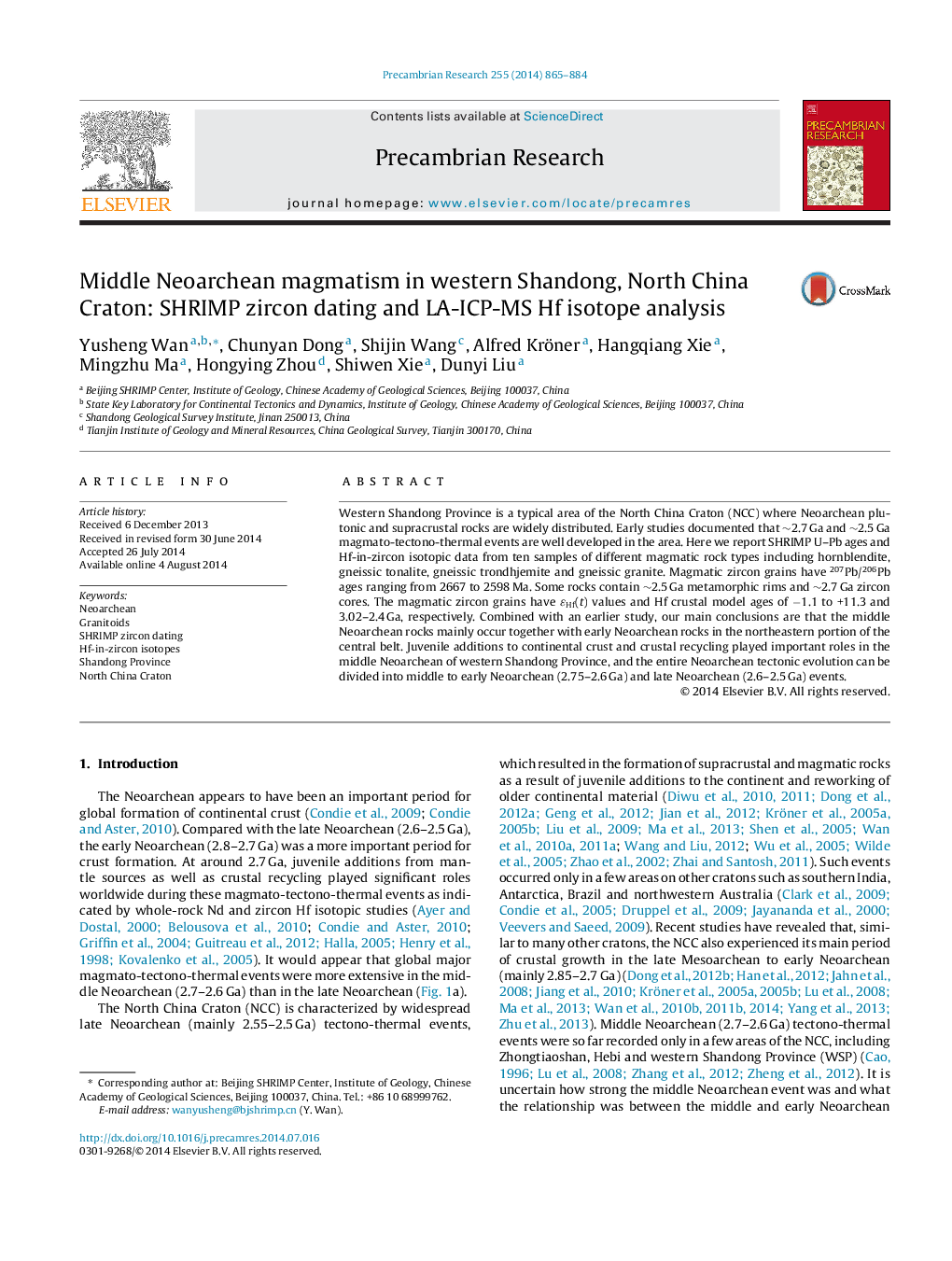| Article ID | Journal | Published Year | Pages | File Type |
|---|---|---|---|---|
| 4722817 | Precambrian Research | 2014 | 20 Pages |
•Middle Neoarchean (2.7–2.6 Ga) tectono-thermal event was well developed.•Juvenile additions to continental crust and crustal recycling play important roles.•Neoarchean tectonic evolution can be divided into early and late Neoarchean events.
Western Shandong Province is a typical area of the North China Craton (NCC) where Neoarchean plutonic and supracrustal rocks are widely distributed. Early studies documented that ∼2.7 Ga and ∼2.5 Ga magmato-tectono-thermal events are well developed in the area. Here we report SHRIMP U–Pb ages and Hf-in-zircon isotopic data from ten samples of different magmatic rock types including hornblendite, gneissic tonalite, gneissic trondhjemite and gneissic granite. Magmatic zircon grains have 207Pb/206Pb ages ranging from 2667 to 2598 Ma. Some rocks contain ∼2.5 Ga metamorphic rims and ∼2.7 Ga zircon cores. The magmatic zircon grains have ɛHf(t) values and Hf crustal model ages of −1.1 to +11.3 and 3.02–2.4 Ga, respectively. Combined with an earlier study, our main conclusions are that the middle Neoarchean rocks mainly occur together with early Neoarchean rocks in the northeastern portion of the central belt. Juvenile additions to continental crust and crustal recycling played important roles in the middle Neoarchean of western Shandong Province, and the entire Neoarchean tectonic evolution can be divided into middle to early Neoarchean (2.75–2.6 Ga) and late Neoarchean (2.6–2.5 Ga) events.
Graphical abstractFigure optionsDownload full-size imageDownload as PowerPoint slide
